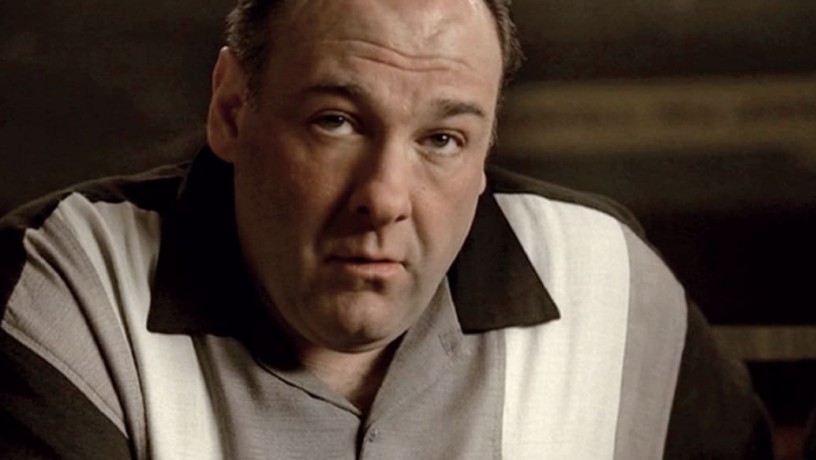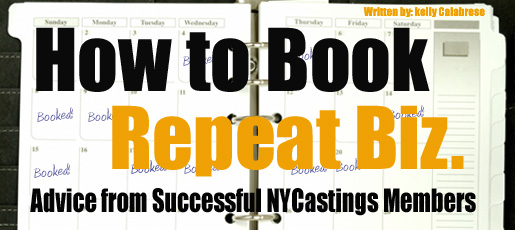One of the primary stepping stones that most actors have from a very young age, and what often drives us to pursue a career in acting is imagination. We were the kids who loved to play dress up, who created elaborate games of make-believe, who tormented our younger siblings (as tyrannical directors) to play bit parts against our starring roles. One of the first things you learn how to do even before you get into proper acting is how to imagine yourself as someone else.
So fast-forward to every young actor’s career just getting off the ground. You’re at that stage where you’re booking work on the regular, you’re getting lots of callbacks, you’re making something of a name for yourself as someone casting directors and directors can rely on.
But – and here comes the monster of dissatisfaction rearing its stupid, stupid head – maybe you find yourself getting called out for the same types of roles again and again, and something just feels…off.
Unsatisfying. For the imaginative kid who still lives inside you, the one who made a cape out of his or her bath towel every night and ran around the house saving humanity, maybe feeling like you’re playing the same role over and over just doesn’t sit right.
There’s an age-old conflict inside every actor: the drive to book work versus the drive to expand your range. For a lot of us that translates to a fear of being stereotyped or typecast as an actor, of falling into a trap of always playing the same types of roles over and over until the end of time.
On the other hand, finding your niche, your wheelhouse, your comfort zone where you know you can nail the role every time is really nice too. So how to navigate this tightrope, how to maximize your opportunities to spread your wings and expand your range versus costing yourself bookings by fighting against the very roles that fit you so well?
The Pros and Cons of Getting Typecast as an Actor
First of all, let’s get real: if you’re even in a position where you’re bitching about getting too much work – work of a particular kind, granted, but still – then you’re in a great place already. That’s what we call a nice problem to have.
So maybe the first thing to do is to take a step back and start thinking of how you can embrace and take advantage of your good fortune while still keeping an eye on how to expand your opportunities to show off your range. Sure, there are actors who reflect what is probably the worst aspect of typecasting for actors – love him or hate him, every time you see Jack Black in a movie, you see him playing Jack Black, essentially.
And take that to a different extreme: as talented as he is, every time you see John Malkovich play a role you’re gonna get Malkoviched. His distinct ways and personality will always shine through if not supersede the character. Seeing Amy Sedaris in “The Mandalorian,” even as much as I adore her work, I couldn’t help but see Jerri Blank from “Strangers With Candy” holding baby Yoda. Same goes for dozens of other highly successful Hollywood actors.
Be Your Own Tilda
But on the other hand, think about actors like Joan Cusack or Tilda Swinton or Joaquin Phoenix: these actors are not exactly what you’d call chameleons; they don’t transform into a wildly different personas each time out. But neither do they feel like they’re delivering a stock “Tilda Swinton character” or anything like that.
The point is that even within the parameters of repeatedly playing similar types of roles, there is a lot of room for innovation, imagination and nuance. There is a lot of room to spread your wings and expand your range even within a typecast role – in fact, it could be argued that this is a BIGGER challenge, simply because it would be so easy just to phone in your standard “tough working guy” or “nervous office drone” or whatever.
Playing Against Type Within The Type
We all of course know the sadly departed James Gandolfini for his iconic portrayal of Joisey tough guy mob boss Tony Soprano. His glowering intimidation and soft-spoken menace punctuated with violent outbursts of rage spawned a thousand imitators.
But if you think back to his pre-“Sopranos” days, in the 1995 film “Get Shorty” starring John Travolta, Gandolfini had a supporting role as Bear, a sad sack former stuntman working as a heavy for a shady film producer. Now, while we can detect the half-lidded, looming presence of a nascent Tony Soprano inside Bear, Gandolfini also manages to portray this tough guy as anything but. He continuously gets beaten up by Travolta’s character, his eyes dart away nervously during confrontations, and he projects a man out of his depth.
Of course some of this is in the writing. Nevertheless, especially with an actor of Gandolfini’s spectacular talent, you have to assume he had a great deal to do with finding a way to play this guy not just as a two-dimensional tough guy who happens to be bad at his job, but with much more nuance.
So if you’re finding yourself in the (enviable) position of getting called in on lots of roles all of the same type, here are some fun exercises to help you stretch within those parameters.
- Figure out your SPECIFIC type. Take a good hard look in the mirror and dig into what your wheelhouse REALLY is as an actor, not just the general headline but the story beneath. It’s too easy to say, “the ditzy blond neighbor” or “the sassy gay friend” or “the blue-collar working guy.” What books does your blue collar guy read? What makes you sad? What makes your hilarity as “the gay friend” poignant? Are you more sensitive than that blue-collar type guy usually is? What’s going on behind your eyes that lends extra depth to these rote characters? THAT is what you want to really focus on and push toward next time you read for one of these type of roles: the contrast between what is expected and what you can deliver.
- Make a list of three actors of your general type. Then watch their work and come up with five unique and different approaches you might try in certain scenes. What’s an “out-of-character” tactic you could use instead of the one they chose to get what they wanted in a scene? Where that actor’s “tough guy” got all yelling and histrionic, what might you have tried instead?
- Embrace it, get better, and find opportunities to play. First of all, take the bookings if they’re being offered, say thank you very much as you cash the paychecks, and remember that all the while, you’re improving your craft. Second, remember that as you get better and gain more control over your career, you will find yourself with more and more opportunities to play roles that aren’t immediately apparent for your physical, emotional and personality type. Also remember that you can do work outside of your primary milieu: write yourself a character that’s outside of your acting box and make a video! Get involved in student films or off-off-wherever theater projects. There are always place to work on your chops even as you continue to succeed with what has been proven to work!







